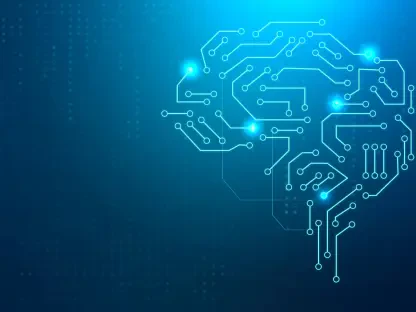The Role of AI in Quality Assurance Today
The landscape of software development has been profoundly reshaped by the integration of Artificial Intelligence (AI) into quality assurance (QA) processes, marking a significant shift in how teams ensure product reliability and maintain high standards. AI tools are now embedded in various stages of the development lifecycle, from code generation to defect detection, offering unprecedented speed and scalability. This technological infusion is not merely a trend but a fundamental transformation that is redefining efficiency standards across the industry.
A key area of impact is the application of Generative AI (GenAI), which accelerates coding and testing by producing scripts, test cases, and even documentation with remarkable speed. Beyond GenAI, AI-driven analytics help identify potential bugs before they manifest, while machine learning models optimize test coverage by prioritizing critical areas. Major industry players, including tech giants and innovative startups, have adopted these tools to streamline workflows, demonstrating a clear commitment to leveraging AI for faster delivery without compromising on quality.
The significance of AI in QA lies in its ability to enhance software reliability while meeting the growing demand for rapid releases. By automating repetitive tasks and providing actionable insights, AI enables teams to focus on complex challenges that require human judgment. This synergy is proving essential in an era where digital transformation dictates market competitiveness, positioning AI as a cornerstone of modern software development strategies.
Trends and Transformations in AI-Driven QA
Emerging Technologies and Evolving Practices
The rise of AI in QA is fueled by cutting-edge technologies such as GenAI, which can draft test scenarios in seconds, and automated test generation systems that adapt to evolving codebases. These innovations are reshaping traditional practices, pushing the boundaries of what automation can achieve. As a result, QA processes are becoming more predictive, with tools anticipating issues based on historical data and patterns.
Team dynamics are also evolving under this technological wave, as roles shift to accommodate new skill sets like prompt engineering and AI output validation. Businesses are increasingly adopting these tools, recognizing their potential to cut down testing cycles significantly. This shift creates opportunities for efficiency gains, provided there is robust human oversight to ensure that automated outputs align with project goals and quality standards.
Human involvement remains critical, especially in interpreting AI-generated insights and making strategic decisions. The balance between automation and expertise is fostering a collaborative environment where technology serves as a force multiplier. This dynamic is opening doors to innovative workflows, encouraging teams to rethink how quality is measured and maintained in fast-paced development settings.
Market Impact and Growth Projections
AI’s influence on software roles is substantial, with recent hiring data indicating that 26% of positions are highly transformed by GenAI, signaling a major shift in job requirements. Growth forecasts suggest that AI adoption in QA will continue to surge over the next few years, with projections estimating a significant uptick in tool implementation by 2027. Performance metrics already show notable improvements in testing speed and defect detection rates, underscoring AI’s tangible benefits.
Looking ahead, AI is poised to redefine QA benchmarks, introducing new metrics focused on predictive accuracy and automation efficiency. Industry reports highlight that organizations integrating AI into their workflows are achieving up to 30% faster release cycles while maintaining or even improving quality standards. These advancements point to a future where AI-driven insights become integral to strategic planning in software development.
The long-term perspective indicates a reshaping of market expectations, as stakeholders demand not just speed but also precision in delivery. As AI tools mature, their impact on cost reduction and resource allocation will likely become even more pronounced. This trajectory suggests that QA teams must prepare for continuous adaptation, aligning their processes with evolving technological capabilities to stay competitive.
Challenges of Integrating AI into QA Processes
Adopting AI in QA is not without hurdles, with over-reliance on automation emerging as a primary concern that can lead to technical debt and quality erosion. When teams lean too heavily on AI outputs without scrutiny, they risk missing critical nuances or introducing errors that compound over time. This challenge is particularly acute in high-pressure environments where speed often overshadows thorough validation.
Technological limitations further complicate integration, as AI outputs can be inconsistent, requiring precise context in prompts to yield relevant results. Without tailored inputs, tools may generate irrelevant or incomplete test cases, undermining their utility. Addressing these issues demands a disciplined approach to tool usage, ensuring that AI serves as a support mechanism rather than a standalone solution.
Mitigating these risks involves implementing human-in-the-loop (HITL) workflows, where human judgment anchors key decision points. Encouraging critical review practices also helps teams identify and correct AI shortcomings before they impact deliverables. By fostering a culture of vigilance, organizations can harness AI’s strengths while safeguarding against its inherent limitations, ensuring sustainable quality improvements.
Governance and Compliance in AI-Enabled QA
Robust governance frameworks are essential for managing AI tools in QA, particularly in safeguarding data security and enforcing usage controls. As AI systems handle sensitive project information, protecting this data through encryption and access restrictions is paramount. Establishing clear policies around tool deployment helps prevent misuse and ensures alignment with organizational objectives.
Compliance with industry standards is another critical consideration, especially in regulated sectors where audit trails are mandatory. AI implementations must adhere to guidelines that guarantee transparency and accountability, mitigating risks of non-compliance penalties. This is particularly relevant for industries like healthcare and finance, where precision and traceability in testing processes are non-negotiable.
Effective governance strikes a balance between speed and safety, tailoring AI outputs to meet specific team needs, such as formatting test cases in Behavior-Driven Development (BDD) structures. By embedding compliance into AI strategies, organizations can maintain trust with stakeholders while maximizing technological benefits. This structured approach ensures that innovation does not come at the expense of reliability or ethical standards.
The Future of QA with AI Collaboration
Envisioning the trajectory of AI in QA reveals a landscape where technology acts as a collaborative amplifier, enhancing rather than replacing human expertise. Emerging innovations, such as adaptive learning models that refine their outputs based on feedback, promise to elevate testing precision. Potential disruptors, including ethical dilemmas around AI decision-making, will shape how these tools are integrated into everyday workflows.
AI literacy is becoming increasingly vital across all team levels, equipping professionals to interact effectively with complex systems. This educational focus is complemented by the growing influence of global team dynamics, where AI bridges language and cultural gaps to foster seamless collaboration. Economic conditions and market demands will continue to drive adoption, pushing organizations to prioritize scalable solutions.
Ethical considerations are also gaining prominence, as teams grapple with biases in AI models and their implications for fairness in testing outcomes. Addressing these challenges requires a commitment to responsible development practices, ensuring that AI serves as a tool for inclusivity. As these factors converge, the future of QA appears poised for a harmonious blend of human insight and technological prowess.
Conclusion and Path Forward for AI in QA
Reflecting on the insights gathered, it becomes evident that AI holds transformative potential for quality assurance, provided human oversight remains a cornerstone of its application. The discussions underscored that while automation accelerates processes, it is the critical thinking of QA professionals that ensures lasting reliability in software outputs. This balance proves to be the bedrock of successful integration across diverse industry contexts.
Looking ahead, actionable steps emerge as vital for sustaining this momentum, with upskilling initiatives topping the list to build AI fluency among teams. Engineering leaders are encouraged to champion HITL workflows, embedding human checkpoints to refine AI contributions. These strategies promise to turn raw technological power into a dependable asset for quality enhancement.
Beyond immediate actions, a broader consideration surfaces around fostering a culture of ethical AI use, ensuring that speed never compromises integrity. QA professionals are urged to blend technical skills with strategic foresight, positioning themselves as stewards of innovation. This forward-thinking mindset offers a pathway to not just adapt to change, but to shape it for better software outcomes.









